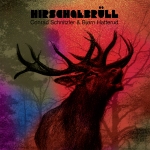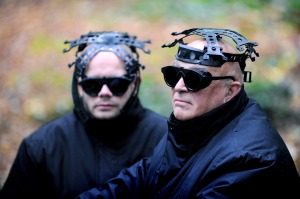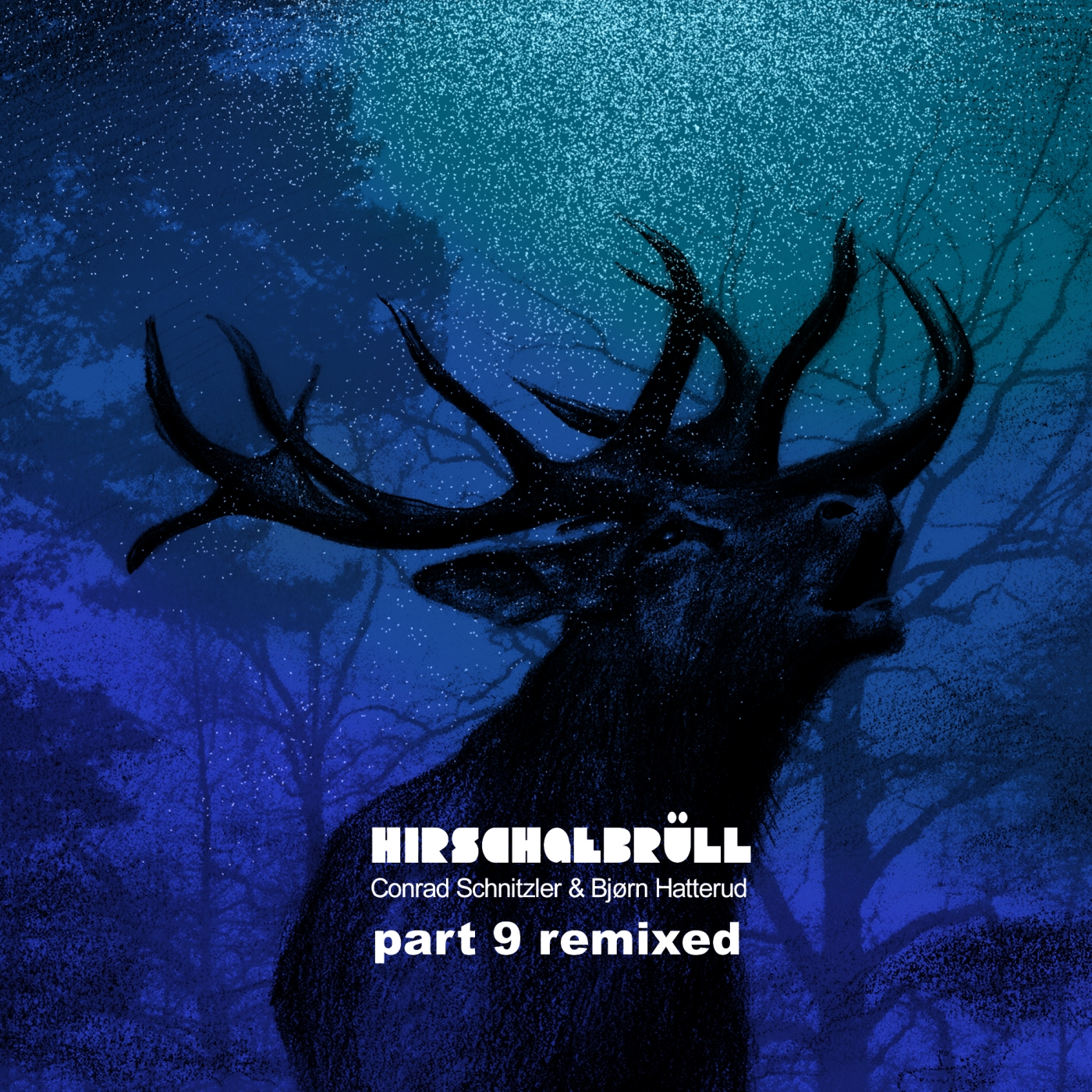About
 Conrad Schnitzler & Bjørn Hatterud – Hirschgebrüll
Conrad Schnitzler & Bjørn Hatterud – Hirschgebrüll
The LP version was co-released on March 14, 2011 by Norwegian labels [OHM] Records, Synesthetic Recordings and TIBProd. It is limited to 100 copies on red 180 gram vinyl and 400 copies on black 180 gram vinyl, including free download featuring bonus remixes. The CD version was released on January 10, 2011 by Fysisk Format. The album was also made available as a digital release (download/streaming) from November 22, 2010. Distribution is handled by Diger. A cassette version limited to only 50 numbered copies is scheduled for release on Kassettkultur on 3 April 2016.
Conrad Schnitzler (1937-2011) was a “German pioneer of cold, hard, electronic sound (…) widely credited as the godfather of European Industrial music.” (The Wire, issue 267, May 2006). He studied art under Joseph Buys, and became well known as a member of the bands Tangerine Dream (1969-70), Kluster (1969-71) and Eruption (1970-72). Schnitzler has since focused on solo works and collaborations with various artists, releasing much of the material on his private label. His early solo recordings include highlights Rot (1973), Blau (1974) and Con (1978) and in the 1980s he released industrial synthpop classics such as The Russians Are Coming and Auf Dem Schwarzen Kanal. Schnitzler’s music has influenced a variety of artists, including Norwegian black metal band Mayhem, who opened their 1987 debut record Deathcrush with his composition “Silvester Anfang”.
Bjørn Hatterud (born 1977) is a Norwegian writer and art critic, recording and performing music solo as Maskinanlegg, with Tore Honoré Bøe in Origami Skandinavia, and as a member of Norwegian Noise Orchestra and other projects.
Bjørn Hatterud visits Conrad Schnitzler, October 2010
Con lives in the small village of Dallgow, outside Berlin. I said “What a great place to live, so near Berlin and so beautiful and quiet.” He answered “Oh… I wish I didn’t have the dogs now” (he has three, all picked up from certain death, left on the streets by former owners). I’m so tired of living here, there is never anything going on out here, I like it in the city, with sounds and people around me. Here the women in the neighborhood complain of my dogs shitting, and I can be a real Nazi sometimes, screaming back at them, asking them to go to hell. I can be a real Nazi!”
We sat in his living room where everything is black or white or chrome, and he said he had made himself a computer based studio up there. He already has one in the basement. He said he did it so he could see some people and daylight. Then suddenly he pointed out to his neighbor and said, “Oh, look at that idiot”, and gave him the finger.

Photo: Thomas Olsen, Berlinkontoret.
We went downstairs where he has all of his work, more than 750 different records with his own music, spanning from the Tangerine Dream days until today. It’s all on CDs. He archives everything, and also have all the tracks ever recorded as sound files on a computer. Often recycling bits and pieces of his own work.
Con has loads of CDs and LPs stocked away too, lots of old stuff from the ’70s etc. But he never sells any of them. If people e-mail him and ask for records, they might as well have a bunch, even the really rare stuff from the 70s. Not long ago he had a plumber doing some work for him, and he gave him a bunch of LPs and said he could try to sell them on eBay. The plumber sold the lot to Japan and made a small fortune. Conrad just laughs at the story and me asking if he shouldn’t sell them himself. He hates LPs – they are too much work, and too expensive to send by mail. So he always tells people he’s out of them.
Con is really digital and up to date, although he’s 73. He has at least five working computers daily operated, and several external hard drives. Some of them with graphics and cover art, some with sound files, some with other things on them. Two different CD printing machines, lots of stuff everywhere. He says that he has never had better times than now, sitting in his basement, printing CDs for sale to private customers etc. He hated the tapes, which he used lots of until the last ten years. He hated the bad quality of early CD-Rs, with their shitty paper labels to stick on. Now that he can make his own CDs everything is better.
He is in touch with fans all over the world by e-mail, but he never meets up where they are and likes to keep his distance. He’s an outsider and says he likes it that way. He sits in his studio in the basement, or the computer based one in his living room, making music, archiving stuff, and selling it on the net.

Photo: Thomas Olsen, Berlinkontoret.
When I sent Con the e-mail that started the story behind the Hirschgebrüll album, I asked for files that he wouldn’t use otherwise, not knowing that he actually archives everything recorded that he likes. So what I got was bad CDs literally dug out of his garbage can, with scratches and dirt on them. The packaging was labeled “come chicken shit flying to you from Germany”. I did the same thing, sent him bad files and stuff I was about to delete. I made music out of his junk, he made music out of mine. Conrad’s tracks where etheric, with deep sounds, and a really three-dimensional feeling to them. Mine where harsher, more industrial and up-front. I didn’t recognize my sounds in his finished tracks, he didn’t recognize his sounds in mine. Thanks to Maja Ratkje’s mastering the tracks got a narrative feeling to them. And a common sound, a sublime and scary walk into the woods was my first thought when I heard the finished master.
A friend of mine had for years been painting stags, so I asked him to draw a calling stag for the cover. Con loved the idea of putting a calling stag on the cover, and he said we should call the album Stag Call. I asked what “stag call” is in German, Conrad answered “Hirschgebrüll”, and that was how the album got its name.

